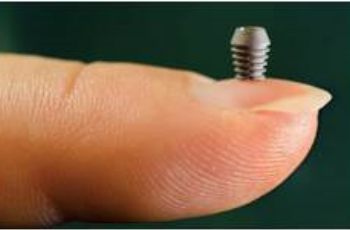Specialists in Eye diseases
7 Specialists found
Information About the Field of Eye diseases
Anatomy of the eye
The eyeball is divided into two segments: The anterior segment of the eye consists of the sclera, conjunctiva, cornea, iris, ciliary body, lens and anterior as well as posterior chamber. The posterior section of the eye is composed of the vitreous body, choroid, retina and optic papilla.
Anterior segment:
Along with the sclera, the cornea forms the covering of the eye. The cornea represents the transparent part of the eye envelope and merges into the white sclera, which continues to envelope the non-visible rear part of the eyeball. Located behind the cornea is the anterior chamber of the eye, that is filled with a certain liquid called aqueous humor. The anterior chamber of the eye is bordered posteriorly (to the back) by the iris. In its center, the iris contains a round opening called pupil. It becomes larger or smaller in diameter depending on the incidence of light. Located behind the iris, we can find a second, smaller cavity that is filled with aqueous humor, called the posterior chamber of the eye. Attached to the posterior chamber are the ciliary body, zonula fibers and lens. Ciliary body together with zonular fibers form the so-called suspensory apparatus of the lens. The zonular fibers connect ciliary body and lens. If a muscle of the ciliary body contracts, a pull is created on the zonula fibers and the lens changes its shape. As a result, the refractive power of the lens is altered. This adjustment of refractive power (accommodation) makes vision of things near and far possible.
Posterior segment:
The vitreous body fills the inside of the eye behind the lens. It features a fine framework of collagenous fibers and is filled with a hydrogel. The retina and optic disc attach to the vitreous body. The retina houses millions of photoreceptors that pick up light stimuli. Via the optic disc and the optic nerve, the light stimuli are relayed. The choroid is the next layer and contains numerous blood vessels to supply the retina. The outermost layer is the sclera.
What eye diseases exist?
Our eyes are highly complex sensory organs. Consequently, many different eye diseases can develop. In the following, the eye diseases are listed:
Diseases of the conjunctiva
- Tears, injuries and chemical burns
- Inflammation of the conjunctiva (conjunctivitis)
- Changes and tumors
Diseases of the lacrimal (tear) apparatus
- Inflammations of the lacrimal gland
- Inflammations of the lacrimal duct or sack, along with a disorder of drainage of tear fluid
- Disorder of tear fluid drainage in newborns
- Keratoconjunctivitis sicca - „the dry eye“
- Tumors
Diseases of the cornea
- Injuries and burns
- Inflammations (Keratitis)
- Keratoconus – conic shape that bulges outward at ist center and thinning of the cornea
- Corneal degeneration
- Corneal dystrophies – disorder of the corneal, connected to corneal clouding
Diseases of the sclera
- Color changes
- Atrophy (regression) and degenerative changes
- Inflammations (Episcleritis and scleritis)
- Injuries
Diseases of the lens
- Cataracts
- Changes of the form and position of the lens
Diseases of pupil, iris and ciliary body
- Changes in pupil size
- Inflammation of iris and ciliary body (Iridocyclitis und uveitis)
- Injuries
- Tumors
- Malformations
Diseases of the eye orbit
- Inflammations
- Tumors
- Degeneration
- Malformations
- Grave’s disease – disease of the orbit of the eye associated with a thyroid gland disorder
- Vessel disorders
- injuries
Diseases of the retina
- Inborn errors of color vision
- Degenerative diseases of the retina – retinal detachment (ablatio retinae), retinal splitting (retinoschisis)
- Diseases of the retinal vessels – diabetic retinopathy, venous and arterial occlusions and other changes of perfusion, retinopathy of prematurity
- Tumors
- Inflammations of the retina and retinal vessels
- Macular degeneration – diseases of the center of the retina (macula)
- Genetic retinal dystrophies
- Injuries of the retina
Glaucoma
- Primary glaucoma
- Secondary glaucoma – glaucomas caused by other eye diseases or general underlying conditions
Defective vision
- Myopia (short-sightedness)
- Hyperopia (far-sightedness)
- Astigmatism (corneal curvature disorder)
- Anisometropia (unequal refractive power of both eyes)
- Presbyopia (age-related decrease of lens elasticity)
- Accommodation paralysis – lack of refractive power as a result of ciliary muscle or nerve paralysis
- Accommodative spasm –lack of adjustment of refractive power due to spasm of ciliary muscle
- Asthenopia – rapid fatigue of the eyes during close work
Strabismus
- Congenital childhood squint
- Normosensorial late strabismus – squinting after the first year of life
- Microstrabismus – unilateral squinting with very small angle of deviation
- Outward misalignment (exotropia)
- Latent strabismus (heterophoria)
- Amblyopia – reduced vision due to strabismus during childhood
Paralysis of the eye muscles
- Paralysis of the eye muscles due to cranial nerve damage
- Paralysis due to eye muscle diseases
- Paralysis due to injuries
Diseases of the vitreous body
- Degenerative changes
- Inflammations
Diseases of the optic nerve and the optic tract
- Papillary congestion, papillary swelling
- Inflammation of the optic nerve
- Anterior ischemic optic neuropathy (AION) – infarction of papillary tissue
- Optic nerve atrophy
- Optic nerve tumors
- Chiasmal syndrome – mass effect (mostly by a tumor) at the optiv nerve chiasma
- Lesions of the optic tract
Which are the most common eye diseases?
In Europe, one in two people is short- or far-sighted. Aside from defective vision, other commonly encountered eye diseases can impair the eyesight. Especially the elderly are affected. Below you will find an overview of the most important eye diseases:
Defective vision
Short-sightedness (myopia) causes blurry vision in the distance, whereas far-sightedness (hyperopia) leads to blurry vision at close range. Visual acuity depends on how light is refracted by cornea and lens as well as on the length of the eyeball. Incident light is first refracted by the cornea and lens and then projected onto the retina. Too long (in near-sightedness) or too short (in far-sightedness) eyeballs produce a blurry image. Less commonly, changes in the cornea and lens are the causes of near- or far-sightedness. In presbyopia, the ability of the eye to accommodate decreases with age. In other words, the eye can no longer adjust properly to the respective distance. In young people, the lens is elastic has the ability to change its refractive power. As we grow older, the elasticity of the lens diminishes. At around 60 years of age, the lens will be rigid. Hence, presbyopia is a normal phenomenon of aging.
Dry eye
Keratoconjunctivitis sicca, oftentimes simply called "dry eye," is a commonly encountered eye disease. It refers to a disorder of moistening the conjunctiva and cornea. Either the lacrimal glands do not produce enough tear fluid or its composition is abnormal. The meibomian glands, which are sebaceous glands located at the edges of the eyelids, may sometimes produce insufficient secretions. For this reason the eyes may feel dry, burn and water or appear red. Patients may describe a foreign body sensation in their eyes.
Age-related macular degeneration
Approximately 10 percent of the German population suffers from age-related macular degeneration, at least in its early stages. The macula is a spot about five millimeters in diameter located at the center of the retina. The macula is the point where visual acuity reaches its maximum. Age-related macular degeneration involves the accumulation of metabolic waste products around this central location. As a consequence, patients will perceive a gray shadow in the center of their visual field and visual acuity is significantly reduced. This means, that reading may not possible any longer.
Glaucoma
Roughly 900,000 people in Germany live with glaucoma. Glaucoma comprises a group of diseases characterized by damage to the optic nerve as a result of increased pressure in the eye. A disturbance of the outflow of the aqueous humor is responsible for the increased intraocular pressure. As the outflow is obstructed, more aqueous humor accumulates in the chambers of the eye and intraocular pressure rises. We distinguish primary and secondary glaucoma. While primary glaucoma is the type to develop spontaneously due to depositions and adhesions in the chamber angle, secondary glaucoma develops as a consequence of another eye disease or a underlying general disease. Classical symptoms include eye pain and headaches and in severe cases also vision can be impaired.
Diabetic retinopathy
Over 20 percent of all diabetics develop diabetic retinopathy (a disease of the retina). By the time diabetes has been present for 20 years, up to 90 percent of people with diabetes begin to show signs of diabetic retinopathy! The high levels of blood sugar harm small vessels in the retina. As a consequence, new vessels form, however they are worse and often become brittle. Hemorrhages as well as fat and protein deposits appear in the retina. As fluid accumulates in the center of the retina, the macula begins to swell (macular edema). If the retina is becomes severely damaged, the patient is at risk of retinal detachment. The signs of diabetic retinopathy consist of blurred vision, dark or reddish spots or a greyish fog perceived in the visual field, and experiencing light flashes once retinal detachment is initiated.
Cataract
Cataract refers to the clouding of the lens. Age-related cataract is the most common form of cataract and makes up 90 percent of the cases. There are also other forms cataract, which are connected to other eye diseases or systemic disorders. The opacification of the lens occurs due to modified structural proteins and densification of cells of the lens. In general, patients have poorer vision, are easily blinded, such as when driving at night or when hit by sunlight, experience a gray fog and perceive colors less intensely.
Inflammation of the conjunctiva (conjunctivitis)
Inflammation of the conjunctiva is a very common condition and can be caused by a number of reasons: irritation of the conjunctiva, for example by smoke, dust, wind or contact lenses, allergic reaction such as hay fever or a viral or bacterial infection. The typical symptoms are reddening of the conjunctiva, burning and itching sensation as well as increased tearing. Furthermore, they eyelids can swell up considerably and in case the infection is of bacterial origin, pus accumulate between the eyelid and the eye.
Stye
Stye refers to a small nodule either found on the inner aspect of the eyelid or on its edge. It arises from inflammation of the sebaceous and sweat glands of the eyelid and is caused by a bacterial infection. Bacteria that are normally part the skin flora, such as staphylococci, are usually the bug causing the stye. It can lead to a painful swelling of the eyelid.
How are eye diseases treated?
The treatment is determined by the disease. First of all, glasses and contact lenses can correct refractive errors. But also surgery can be used to correct refractive errors, which is referred to as refractive surgery. The most commonly employed methods aim to change the refractive power of the cornea or lens. This makes it possible to compensate for the defective vision.
Dry eye and conjunctivitis are managed with eye drops or eye ointments. In case of dry eye, an artificial tear fluid can be prescribed, which has to be dripped into the eyes multiple times a day in order to replace the natural tear fluid. There are many different eye drops or eye ointments to treat conjunctivitis. The type of eye medication depends on what caused your conjunctivitis, so for example your drops may contain cortisone to reduce inflammation or they may contain antibiotics to fight bacterial infection. Antibiotic eye ointments are indicated for the treatment of stye. Should this not help, your ophthalmologist can remove the stye with a small operation.
Macular degeneration is only partly treatable. It represents a sign of aging and we cannot reverse age-related changes. However, there are some treatments that do help in some cases. If the condition is associated with formation of new blood vessels within the choroid, it's feasible to inject VEGF-inhibitors directly into the eye (intravitreal injection). VEGF-inhibitors are agents which inhibit the formation of new blood vessels and thereby can improve vision. The intravirteal application of medications can also be performed to treat diabetic retinopathy: Steroids and antibodies against VEGF tone down inflammation and formation of new retinal vessels. Newly formed vessels and bleedings in the retina can also be targeted by laser coagulation. During this procedure, blood vessels are obliterated using a green laser.
Several options are available for the therapy of glaucoma. The general aim of each of these methods is to lower the pressure in the eye. Eye drops can be helpful. In many cases, however, the intraocular pressure is reduced using laser treatment or surgery: selective laser trabeculoplasty (SLT) or trabeculectomy creates new outflow pathways for the aqueous humor.
No effective medication is available for cataract. Thus, surgery is the treatment of choice once the clouding of the lens has advanced to the extent where it affects the patient's daily routine and reading ability. The surgical procedure involves the removal of the clouded lens. Afterwards, it can be replaced with an artificial lens. Also contact lenses or prescription glasses can correct the changed refractive power of the eye which has been brought about by the loss of the lens.
Which doctors and clinics are experts for eye diseases?
Diseases of the eye are treated by doctors who specialize in ophthalmology. Ophthalmologists may choose to specialize in certain fields. For instance, some specialize in refractive surgery, cataracts, glaucoma and retinal diseases. Especially patients who require surgery, are recommended to pick a doctor who is an expert in the respective field and who performs this surgery on a regular basis.
Let us help you find an expert for your condition. All doctors and clinics listed have been reviewed by us for their outstanding specialization in the field of eye diseases and are looking forward to your inquiry or request for treatment.
Medical Articles
Your benefits
If you have found a matching specialist, you can contact him/her directly and upload records if needed. And in case you need treatment, you can…
We will direct your request to the appropriate specialists
We are happy to assist you in choosing a specialist for your needs. The service of PRIMO MEDICO is always free, confidential and discreet for…
The treatment of scoliosis in transition - When is surgery necessary?
Scoliosis is a lateral deviation of the spine. This usually involves torsion of the individual trunk sections as well as a change in the side…
Specialists' Second Opition
Many people suffer from shoulder pain or hip problems. In this case, doctors quickly recommend surgical intervention. But is this really always…
High-tech against cancer: new treatment facility put into operation
At the Paul Scherrer Institute in Switzerland a new state-of-the art treatment facility, the so-called Gantry 3, has been put into operation.
Implants: "The Longer, the Better" Has Had Its Days
Ultra-short implants have a significantly better durability than expected by experts - with lower costs, treatment times, and complications.
Modern Prostheses for Natural Walking
The ankle joint is particularly susceptible to degeneration such as osteoarthritis. It has to bear the greatest weight of all joints in the body.










![[Translate to English:] Zweitmeinung von Spezialisten [Translate to English:] Zweitmeinung von Spezialisten](/fileadmin/user_upload/Zweitmeinung-von-Spezialisten_350px.jpeg)


